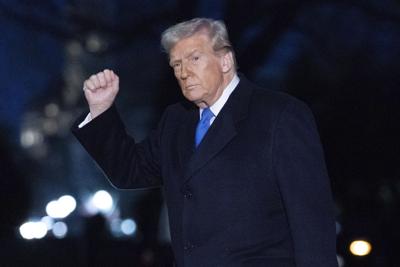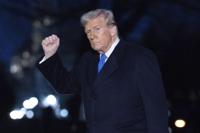U.S. President Donald with Canada is escalating with new measures from the U.S. and retaliatory responses from Canada.Â
Hereâs a look at what tariffs are currently in place, what is being threatened, and how Canada has retaliated so far:Â
Active U.S. tariffs
⢠A 25 per cent tariff on Canadian steel, aluminum, and many âderivativeâ products made with those metals.Â
⢠A 25 per cent tariff on all Canadian products that donât comply with the 2018 , and a 10 per cent tariff on non-compliant energy and potash. Experts say about 50 to 60 per cent of Canadaâs exports to the U.S. comply with the trade dealâs rules. Trump to claims of a national emergency over fentanyl and migrants crossing the U.S. border illegally from Canada.
⢠A 25 per cent tariff on not made in the U.S., which took effect April 3.Â
Retaliatory Canadian tariffs
⢠25 per cent tariffs on $30 billion worth of American imports, implemented in response to Trumpâs border tariffs.Â
⢠25 per cent tariffs on $29.8 billion worth of steel and aluminum products from the U.S., implemented in response to Trumpâs tariffs on the same goods from Canada.Â
⢠A 25 per cent on fully assembled vehicles that donât comply with CUSMA since they are made with less than 75 per cent North American content. This counter-tariff took effect April 9. Components of compliant cars that arenât made in Canada or Mexico are subject to the 25 per cent tariff. Prime Minister Mark Carneyâs office said April 3 this is the âmirrorâ of Trumpâs auto tariffs on Canada, but it does not apply to auto parts that cross back and forth across the border. The tariff targets about $35 billion worth of American vehicles brought into Canada.Â
⢠Canadaâs counter-tariffs would be paid by Canadian importers of American goods. The duties levied to date could raise up to $24 billion in revenue before remissions for the Canadian treasury.
Threatened U.S. tariffsÂ
⢠Trumpâs âreciprocalâ tariffs: on April 2, Trump imposed a sweeping 10 per cent baseline tariff on imports into the U.S., with duties going up to 50 per cent on dozens of countries or territories that the Trump administration argues use trade barriers unfairly against America. Though Trump spared Canada from a new baseline tariff, his executive order says that if the so-called border tariff is dropped, Canadian imports that donât comply with CUSMA would be slapped with a 12 per cent âreciprocalâ tariff.Â
⢠An unspecified tariff on copper, dependent on a due before Nov. 25.
⢠Additional unspecified tariffs on lumber, dependent on a due before Dec. 1. The U.S. Commerce Department has recommended lumber tariffs against Canadian spruce, pine and fir be raised from more than 14 per cent to more than 34 per cent.
⢠Trump demands a âfairer economic dealâ be negotiated ahead of the scheduled July 2026 review of the Canada-U.S.-Mexico free trade deal. sets out his America First trade policy, and hints he will consider withdrawal from the deal. He has asked for recommendations about Americaâs âparticipation in the agreement,â and tied his view of whatâs âfairâ or âunfairâ to criticisms of Canada on a , including what he says is Canadaâs failure to spend on its military protection, to meet its NATO defence spending target of two per cent of GDP, to its value-added 5 per cent federal sales tax, dairy tariffs, and 3 per cent digital services tax.
⢠Carney said that the U.S. has âsignalledâ it is preparing more tariffs that will hit Canada on âso-called strategic sectorsâ like pharmaceuticals, lumber and semiconductors.
Error! Sorry, there was an error processing your request.
There was a problem with the recaptcha. Please try again.
You may unsubscribe at any time. By signing up, you agree to our and . This site is protected by reCAPTCHA and the Google and apply.
Want more of the latest from us? Sign up for more at our newsletter page.





















To join the conversation set a first and last name in your user profile.
Sign in or register for free to join the Conversation